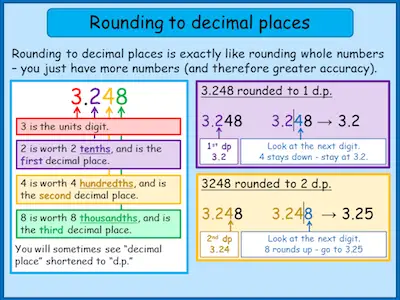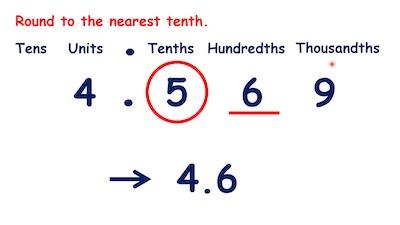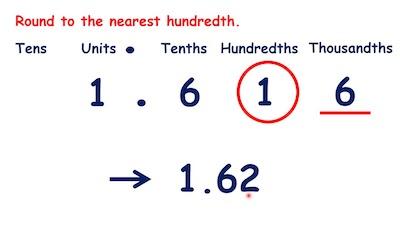The reality is that rounding decimal numbers is something that you do in your daily life. Just think about when you go out to shop for an item, for example. In mathematics, round decimal numbers simply mean that you are using a technique to find an approximate value or an estimate and to limit the amount of decimal place.
Rules To Round Decimal Numbers

As every topic in maths, when you are looking to round decimal numbers, you need to follow some specific rules. However, these rules are very easy to understand and to apply.
Ultimately, when you want to round decimal numbers, you may find yourself in different situations and you may need to:
- Round off to the nearest whole number which means that you need to round off a decimal to the nearest whole number.
- Round off to the nearest tenths which means that you need to round off a decimal number correct to 1 decimal place.
- Round off to the nearest hundredths which means that you need to round off a decimal number correct to 2 decimal places.
- Round off to the nearest thousandths which means that you need to round off a decimal number correct to 3 decimal places.
So, let’s check the rules for rounding decimals.
Discover 3 ways you round numbers every day.
#1: Rounding Decimals To The Nearest Whole Number:

When you need to round a decimal number to the nearest whole number, you will need to look at the first decimal place – the tenths place. Then, if the tenths place value is 5 or greater than 5, then the digit at the ones place increases by 1 and the digits at the tenths place and thereafter becomes 0.
Let’s say that you have the decimal 9.63 that you want to round to the nearest whole number. In 9.63, the 6 is in the tenths place. Since it is greater than 5, you need to round the number up to the nearest whole number 10.
Learn more about rounding decimals to the nearest whole number.
#2: Rounding Decimals To The Nearest Tenths:

When you want to round a decimal number to the nearest tenths, then you will need to look at the hundredths place. In case this value is 5 or greater than 5, then the digit at the tenths place increases by 1 and the digits at the hundredths place and thereafter becomes zero.
Imagine that you want to round the decimal number 6.05 to the nearest tenths. In 6.05, the number 5 is the digit in the hundredths place. Since it is 5, then you know that you will need to round the decimal number up to the nearest tenths 6.1.
Take a look at the rounding numbers rules for fractions.
#3: Rounding Decimals To The Nearest Hundredths:

When you want to round a decimal number to the nearest hundredths, then you will need to look at the thousandths place. In case this value is 5 or greater than 5, then the digit at the tenths place increases by 1 and the digits at the hundredths place and thereafter becomes zero.
Learn more about estimating and rounding numbers.
Imagine that you want to round the decimal number 101.277 to the nearest hundredths. In 101.277, the number 7 is the digit in the thousandths place. Since it is 7, then you know that you will need to round the decimal number up to the nearest hundredths 101.28.